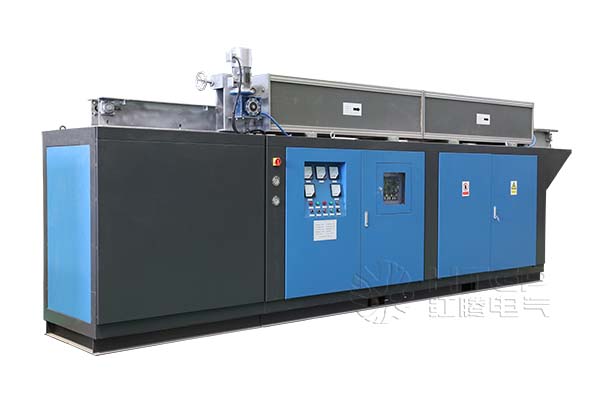Is Induction Heating Good for Forging?
Working Principle of Induction Heating
Induction heating for forging is a heating process that uses an induction heating furnace to heat a metal part to the forging temperature. Induction heating works by generating an electromagnetic field that induces eddy currents in the metal part, which in turn generates heat due to the material’s electrical resistance.

To use induction heating for forging, a metal part is placed inside an induction coil, which is connected to an induction power supply. The power supply generates a high-frequency alternating current that flows through the coil and generates an electromagnetic field.
As the metal part is placed inside the coil, the electromagnetic field induces eddy currents in the metal, which generates heat due to the material’s resistance. The heat is then transferred to the metal part, which is quickly heated to a forging temperature.
Applications of Induction Heating
Some typical applications of induction heating for forging include heating metal parts for hot forgings, such as forging crankshafts, connecting rods, gears, and other automotive and aerospace components. Induction heating can also be used for heat-treating metal parts after forging, such as hardening and tempering steel components.
Advantages of Induction Heating for Forging
Induction heating is an excellent choice for forging, as it offers many advantages over other heating methods.
One of the biggest advantages of induction heating for forging is its speed. Induction heating can heat a metal part to a forging temperature much faster than other methods, such as gas or oil-fired furnaces. This means that the heating process can be completed more quickly, which can save time and increase productivity.
Another advantage of induction heating for forging is its efficiency. Induction heating can deliver heat directly to the metal part being forged, without heating the surrounding air or furnace walls. This means that less energy is wasted and more of the power is used to heat the part, making the process more efficient.
Induction heating also offers precise temperature control, important for achieving consistent quality in the forging process. By adjusting the frequency and power of the induction heating, the temperature of the metal part can be precisely controlled, ensuring that it is heated to the correct temperature for the forging process.
Finally, induction heating is a clean and safe heating method for forging. Unlike gas or oil-fired furnaces, induction heating does not produce any harmful emissions or require the use of flammable fuels. This makes it a safer and more environmentally-friendly option for heating metal parts for forging.
Overall, induction heating is an excellent choice for forging due to its speed, efficiency, precise temperature control, and safety.

